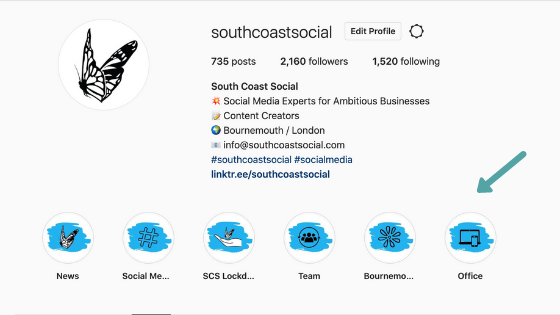Social media strategies have evolved wildly over the years and have become even more essential during the whirlwind of 2020. We could all plan to post on the day of a product release or a grand opening a few years ago, knowing we would get immediate interaction. Now, our followers may not always see an important post unless you really do your homework.
Since social media is constantly changing, the methods in which we make our company’s events, initiatives, and information available to our audiences must constantly change as well. As the world of social media marketing grows, it is more important than ever to have a robust strategy to try and ‘woo’ your audiences on a consistent basis and grow their trust as part of your social media strategy in 2021. While there are many things to consider, here are 5 important tips to ensure you start the year on top of your game…
1. Prioritise quality and authenticity
This has been the number one priority since day one, but it can never be said too much. As tools for creating engaging content become more popular and readily available, more and more companies are upping their game, making it harder to “stop the scroll.”
As consistently as you can, post high-quality, engaging visuals. If you have an important message for your audience, do not sell yourself short with easy or poorly executed content. Go the extra mile to acquire scroll-stopping videos, images, and relevant captions.
Especially video! According to the Cisco Visual Networking Index, it was estimated that by the time we hit 2021, around nearly 80% of all internet traffic will be video. Social media platforms are increasingly prioritising video as this format appeals across demographic lines.
Authenticity goes hand in hand with quality. Users are growing tired of fake content and while more is being done to prevent the spread of misinformation since the Covid-19 pandemic began, it is more important than ever to be authentic. We know that creating authentic content isn’t always easy, but it will encourage your audience to have a growing trust in your brand.
2. Do a Content Audit
A content audit is the process of collecting and analysing all the assets you have available on your website or otherwise. When planning social content, knowing what is already readily available will save you time and effort and will help inspire you in creating new content.
Assess what can be repurposed, tweaked or deleted, and then categorise each of them by where that content falls in the buyer’s journey. Don’t forget to add notes as context is always key.
3. Utilise stories… like there’s no tomorrow
Most social audiences (not all, but most) are on Instagram. If they are not on Instagram, they’re definitely on Facebook. Instagram and Facebook have few things in common, but one stands out screaming, “Hey! Look at me!” and that’s Stories.
Stories have legitimately taken over social media since their launch in 2016, with over 500 million users watching them every day. One third of the most viewed Instagram Stories are from businesses – and you absolutely want to ensure you are part of that one third. If you are having a hard time deciding what type of content to post to stories, think quick, easily digestible, and memorable. Any content that requires your audience to ‘lean in’ and digest should be a post. Everything else? Post that baby to a story. (And then add it to a highlight! See below for an example of our highlights grid).
4. Spend time online (to avoid social deafness)
Conversations online spread like wildfire. It’s likely that you won’t be able to keep up with all the topics of conversation that occur on a daily basis (and we would urge you not to try), but it is important to keep an eye on them, if and when your audience is taking part in them.
If you are utilising a social content scheduler like Sendible, it’s easy to check in just a few times a month… but let the automation do its thing. It is essential to check in weekly – if not daily – and make sure that the content you have scheduled is still appropriate.
You do not have to be everywhere. With several big-name options to choose from – including LinkedIn, Twitter, Instagram, Snapchat, Facebook, Pinterest, TikTok, and YouTube, it is not feasible in terms of time or resources. Focus on the platforms your target audiences are using.
Here are some generalities:
LinkedIn: Most users have a college/advanced degree, and their incomes tend to be higher.
Twitter: 63% of all Twitter users worldwide are between the ages of 35 and 65.
Instagram: Instagram skews more towards younger users:
– Age 18-29: 67%
– Age 30-49: 47%
– Age 50-64: 23%
– Age 65+: 8%
Snapchat: Most users are under the age of 34.
Facebook: Facebook, while not as popular as Snapchat or Instagram with younger users, does span a wide range of ages.
Pinterest: 25 percent more women use Pinterest than men.
TikTok: Although TikTok is fairly secretive about its user demographics, one analysis revealed that 40% of TikTokers are under age 20 and another 26% are under 30.
YouTube: Everyone seems to use YouTube! Set up a channel if relevant to your business.
By being aware of your platform selections, you can make the most of your time and effort – and reach the right people in the right places with your social media strategy. Don’t forget to keep up to date with the latest trends for each platform.
5. Meet to discuss ‘Crisis Communication’
This is not exactly a revolutionary social media strategy. However, it is a fundamental one. 2020 has taught us many things, but if there is one thing we need to take away for the coming year it’s that a timely response to social crises is absolutely paramount.
Now, more than ever, what your company stands for is incredibly important to your audience. Try planning an internal meeting or a team zoom to discuss the issues that occurred during 2020 and how you could have responded better socially. Based off what you find in that meeting, decide your company’s stance and plan ways to communicate quickly about similar issues. You may never need to use these responses externally but knowing these things will help your brand’s focus either way.
Contact us
This list truly scratches the surface. Day in and day out, users are inundated by thousands of messages on social media and everyone is doing what they can to keep up, let alone stand out. As a brand, you want to be trusted by your audience. If you follow the five steps outlined here, it is highly likely that you will have a robust social content calendar matched by an audience that trusts both your online presence and your brand into 2021, but we know it can also be rather time consuming…
At South Coast Social, we’re a team of experienced content creators and social media advertising experts who specialise in bringing your brand and personality to life online. Contact us today and allow us to take care of all of your social media needs for you.








